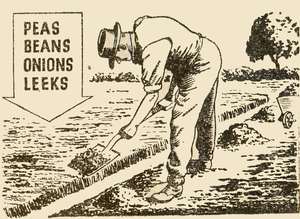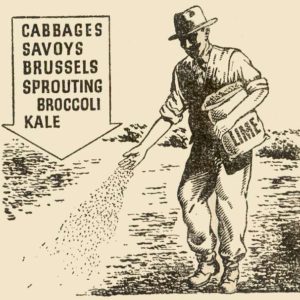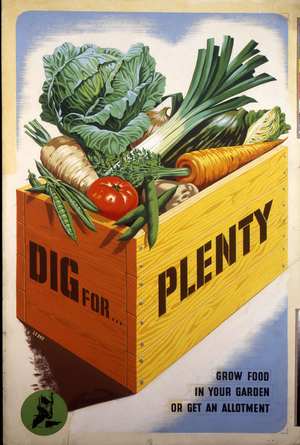The right approach for the gardener is, first to find out what vegetables grow satisfactorily in his neighbourhood, and then decide which of them he will grow, bearing in mind his family’s likes and dislikes. He should then divide his plot into three equal parts. For simplicity we will call them A, B and C. On plot A he will grow the first year potatoes and other roots––parsnips (if his family like them), carrots, beet and so on. On plot B he will grow green vegetables –– all the cabbage family; and on plot C he will grow peas, beans, onions and leeks.
If farmyard manure is difficult to get (it is in most districts) and the gardener has to eke out the compost we hope he has made, he should manure each year only on the section that is to grow peas, beans, onions and leeks. So in three years the whole plot will be manured.
Now what happens to the plan the second year? He should just move his three groups round. On plot A, go the peas and beans, onions, etc.; on plot B, the potatoes and root crops and on plot C, the green vegetables.
In the third year he should move them round again––on plot A, the green vegetables; on plat B, the peas, beans, onions and leeks; and on plot C, the potatoes and root crops. Then, in the fourth year, he will begin the rotation all over again.
This page on crop rotation combines 2 pages from the original February 1945 official growing guide.
By this simple system you not only ensure that the ground is kept in reasonably fertile condition all over, but it helps you to gauge how much ground you should devote to the various kinds of crops. The rotation can be worked equally well in the garden as on an allotment, but in each case space must be left somewhere at one end (say, 6 foot wide) for the seed bed, marrow bed, compost heap and so on.


It is much easier to arrange a proper rotation when starting from scratch; but even a garden that was worked last year could be brought into line by remembering where your crops were last season and trying to plant the appropriate vegetables this year to follow them up.
Crop rotation will help with liming, too, if your soil needs lime. It is a good idea to lime each year that part of the plot that carried potatoes and root vegetables the year before.
Now for the jobs you can do outdoors in February, if the weather is “open” and the soil workable. Don’t forget to rake in a good general fertiliser, such as “National Growmore”, a few days before sowing or planting.



